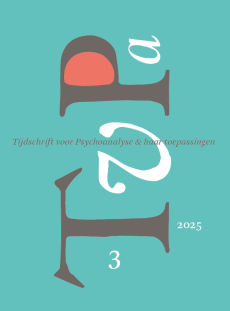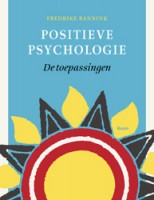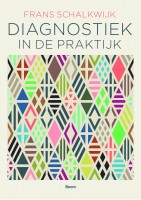Freud, Dalí en het surrealisme
Summary
Freud, Surrealism and Dalí; on creativity and the assault on comprehension
Having sketched some aspects of the relationships between psychoanalysis and Surrealism, of Dalí’s life and work and of Freud’s attitude towards art, the author discusses elements of creativity and of the dynamics of public and private reception of revolutionary ideas and images. It is argued that Freud’s encounter with Dalí in London may not in the first place have changed his opinion about the Surrealists, but that he came to accept their work as objects for psychoanalytic study.
Literatuur
- ARIETI, S. (1973). Schizophrenic art and its relationship to modern art. Journal of the Amererican Academy of Psychoanalysis, 1, 333-365.
- BARON, J. (1980). Anthologie plastique du surréalisme. Parijs: Editions Filipacchi.
- BAUM, T. (1980). La révolution surréaliste. In: J. Baron, Anthologie plastique du surréalisme (p. 9-15). Parijs: Editions Filipacchi.
- CHESHIRE, N.M. (1996). The empire of the ear: Freud’s problem with music. International Journal of Psychoanalysis, 77, 1127-1168.
- DALÍ, S. (1968). Mijn leven als genie. Keuze, vertaling en inleiding van Gerrit Komrij. Amsterdam: Arbeiderspers.
- DAVIS, F.B. (1973). Three letters from Sigmund Freud to André Breton. Journal of the American Psychoanalytic Association, 21, 127-134.
- DESCHARNES, R. & NÉRET, G. (1994). Salvador Dalí 1904–1989 — Het geschilderde werk. 2 delen. Keulen: Taschen, 2007.
- DÉON, M. (1994). L’aurore. In R. Descharnes & G. Néret (1994), Salvador Dalí 1904–1989, (deel II, p. 694-695). Keulen: Taschen, 2007.
- FINKELSTEIN, H. (1983). Salvador Dali: Double and multiple images. American Imago, 40, 311-335.
- FREUD, S. (1936). Selbstdarstellung. Wenen: Internationaler Psychoanalytischer Verlag.
- FREUD, S. & ABRAHAM, K. (1965/1980). Briefe 1907–1926. H.C. Abraham, E.L. Freud (red.) Frankfurt a/M: S. Fischer Verlag.
- FREUD, S., & PFISTER, O. (1963). Briefe 1909–1939. E.L. Freud, H. Meng (red.). Frankfurt a/M: S. Fischer Verlag.
- GEDO, J.E. (1989). Terribilità — The paranoid monster as creative genius. In Portraits of the artist — Psychoanalysis of creativity and its vicissitudes (p. 161-193). Londen: The Analytic Press.
- GREEN, A. (1986). Passions and their vicissitudes. In On private madness (p. 214-253). Londen: The Hogarth Press and the Institute of Psycho-Analysis.
- JONES, E. (1957). Sigmund Freud — Life and Work, Deel III. Londen: The Hogarth Press.
- KAPLAN, D.M. (1988). The psychoanalysis of art: some ends, some means. Journal of the American Psychoanalytic Association, 36, 259-293.
- KAPLAN, D.M. (1989). Surrealism and psychoanalysis: notes on a cultural affair. American Imago, 46, 319-327.
- KNAFO, D. (2001). Claude Cahun. Gender and Sexuality, 2, 29-61.
- KNAFO, D. (2002). Revisiting Ernst Kris’ concept of regression in the service of the ego in art. Psychoanalytic Psychology, 19, 24-49.
- OLSON, N. (1997). Cubism, Freud, and the image of wit. Psychoanalytic Study of the Child, 52, 301-331.
- ROMM, S. & SLAP, J.W. (1983). Sigmund Freud and Salvador Dali: personal moments. American Imago, 40, 337-347.
- ROSE, G.J. (1983). Sigmund Freud and Salvador Dali: cultural and historical processes. American Imago, 40, 349-353.
- ROSE, G.J. (1996). Necessary illusion — Art as witness. Madison CT: International Universities Press.
- STERBA, R.E. (1969). The psychoanalyst in a world of change. Psychoanalytic Quarterly, 38, 432-454.
- STUFKENS, A. (1989). Twee broers: punt contra punt; over creativiteit en de Huxleys. In I. Mettrop-Wurster (red.), Broers en zussen; psychoanalytische opstellen over de relatie van kinderen (p. 98-122). Amsterdam: Boom.
- STUFKENS, A. (2006). Gustav Mahler consulteert Sigmund Freud in Leiden: over de ‹wandelanalyse›. In J.E. Verheugt-Pleiter (red.), Psychoanalyse anno nu (p. 35-48). Assen: Van Gorcum.
- WOOD, G. (2007). Vreemde dingen — Het fantastische werkelijkheid laten worden. In G. Wood & T. te Duits (red.), Vreemde dingen; surrealisme en design (p. 831). Rotterdam: Museum Boijmans Van Beuningen.
 © 2009-2025 Uitgeverij Boom Amsterdam
© 2009-2025 Uitgeverij Boom Amsterdam
ISSN 1382-516x
De artikelen uit de (online)tijdschriften van Uitgeverij Boom zijn auteursrechtelijk beschermd. U kunt er natuurlijk uit citeren (voorzien van een bronvermelding) maar voor reproductie in welke vorm dan ook moet toestemming aan de uitgever worden gevraagd:
Behoudens de in of krachtens de Auteurswet van 1912 gestelde uitzonderingen mag niets uit deze uitgave worden verveelvoudigd, opgeslagen in een geautomatiseerd gegevensbestand, of openbaar gemaakt, in enige vorm of op enige wijze, hetzij elektronisch, mechanisch door fotokopieën, opnamen of enig andere manier, zonder voorafgaande schriftelijke toestemming van de uitgever.
Voor zover het maken van kopieën uit deze uitgave is toegestaan op grond van artikelen 16h t/m 16m Auteurswet 1912 jo. Besluit van 27 november 2002, Stb 575, dient men de daarvoor wettelijk verschuldigde vergoeding te voldoen aan de Stichting Reprorecht te Hoofddorp (postbus 3060, 2130 KB, www.reprorecht.nl) of contact op te nemen met de uitgever voor het treffen van een rechtstreekse regeling in de zin van art. 16l, vijfde lid, Auteurswet 1912.
Voor het overnemen van gedeelte(n) uit deze uitgave in bloemlezingen, readers en andere compilatiewerken (artikel 16, Auteurswet 1912) kan men zich wenden tot de Stichting PRO (Stichting Publicatie- en Reproductierechten, postbus 3060, 2130 KB Hoofddorp, www.cedar.nl/pro).
No part of this book may be reproduced in any way whatsoever without the written permission of the publisher.
Nieuwsbrief Boom Psychologie
Meld u nu aan en ontvang maandelijks de Boom Psychologie nieuwsbrief met aantrekkelijke aanbiedingen en de nieuwe uitgaven.
Aanmelden


